Electronic Reading Devices are Transforming the Concept of a Book

Emma Teitgen, 12, thought the chemistry book her teacher recommended would make perfect bedside reading. Perfect because it might help her fall asleep.Then she downloaded “The Elements: A Visual Exploration” to her iPad. Instead of making her drowsy, it blossomed in her hands. The 118 chemical elements, from hydrogen to ununoctium, came alive in vivid images that could be rotated with a swipe of the finger.
Tapping on link after link, Teitgen was soon engrossed in a world of atomic weights and crystal structures. Three hours later, the seventh-grader looked up to see that it was 11 p.m., way past her bedtime. More than 550 years after Johannes Gutenberg printed 180 copies of the Bible on paper and vellum, new technologies as revolutionary as the printing press are changing the concept of a book and what it means to be literate. Sound, animation and the ability to connect to the Internet have created the notion of a living book that can establish an entirely new kind of relationship with readers. As electronic reading devices evolve and proliferate, books are increasingly able to talk to readers, quiz them on their grasp of the material, play videos to illustrate a point or connect them with a community of fellow readers. The same technology allows readers to reach out to authors, provide instant reaction and even become creative collaborators, influencing plot developments and the writer’s use of dramatic devices.
Vook (the name is a mash-up of “video” and “book”) has published more than two dozen titles, including “Reckless Road,” which describes the early days of heavy metal band Guns N’ Roses. “Reckless Road” weaves in dozens of videos of the L.A. band’s early performances and interviews with band members and groupies.The videos and other digital features are designed to “project the emotion of the book without getting in the way of the story,” said Brad Inman, Vook’s chief executive and a former real estate columnist for the San Francisco Examiner. “We want to revive the passion for traditional narrative. Multimedia could be a catalyst for spawning more reading.” Digital technology is also transforming reading from a famously solitary experience into a social one. The newest generation of readers — the texting, chatting, YouTubing kids for whom the term “offline” sounds quaint — has run circles around the fusty publishing process, keeping its favorite stories alive online long after they’re done reading the books.”They’re extending the world by creating new characters,” Westerfeld said. “That’s what good readers do. They take apart the narrative engine and, examining the different parts, they ask how things could have been different.” Authors are pulled into the scene by fans who barrage them with e-mail to share their reactions, ask how plots came about and glean hints of what will happen in the next novel…. but some people worry that new technologies will diminish the classic reading experience.Whereas printed texts often are linear paths paved by the author chapter by chapter, digital books encourage readers to click here or tap there, launching them on side journeys before they even reach the bottom of a page. Some scholars fear that this is breeding a generation of readers who won’t have the attention span to get through “The Catcher in the Rye,” let alone “Moby-Dick.” But Larry Rosen, a psychology professor at Cal State Dominguez Hills, said it was a mistake to conclude that young people learned less simply because “they are flitting around all over the place” as they read. “Kids are reading and writing more than ever,” he said. “Their lives are all centered around words.” Dr. Gary Small, director of the Center on Aging at UCLA and author of “iBrain,” said Internet use activated more parts of the brain than reading a book did.
Read the entire article here.Image Source : aperturismo








